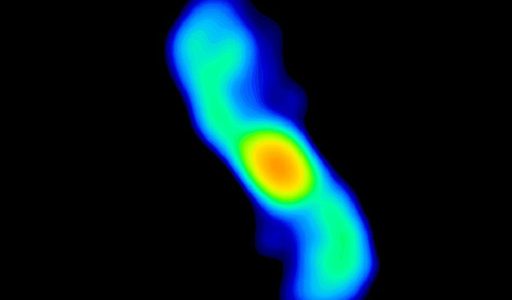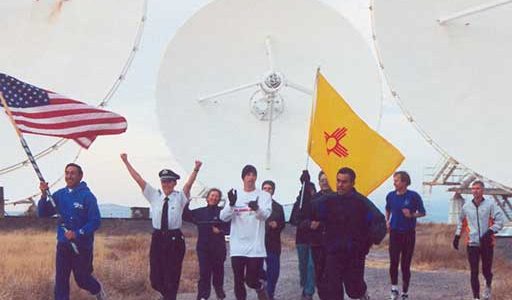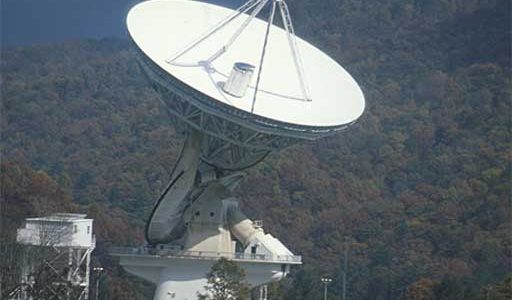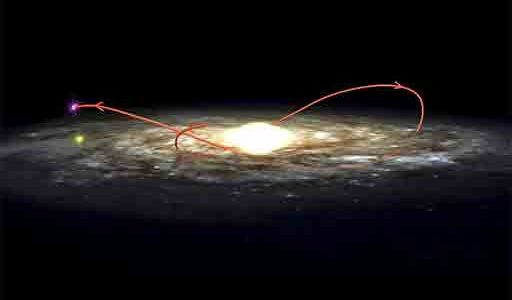Latest NRAO News
News is managed by NRAO News & Public Information. Questions about News? Have a story to share? Want to interview a scientist or create new media about our telescopes?

A team of astronomers using the National Science Foundation’s Very Large Array radio telescope has caught an old star during the very brief period of its transformation into a planetary nebula, a shining bubble of glowing gas with a hot remnant star at its center.

The National Radio Astronomy Observatory hosted the runners and support personnel of the Americans United Flag Across America run as the transcontinental memorial and fundraising effort came through New Mexico.

Astronomers have made the first tentative observations of the faint, tell-tale signals of what appear to be dust grains spinning billions of times each second.

The National Radio Astronomy Observatory (NRAO) has named Jim Ulvestad the new Assistant Director for New Mexico Operations in Socorro, New Mexico, effective December 15.

Astronomers using the National Science Foundation’s 12 Meter Telescope at Kitt Peak, AZ, have discovered the complex organic molecule vinyl alcohol in an interstellar cloud of dust and gas near the center of the Milky Way Galaxy.

Astronomers find an ancient black hole speeding through the Sun’s Galactic neighborhood, devouring a small companion star as the pair travels in an eccentric orbit looping to the outer reaches of our Milky Way Galaxy.





